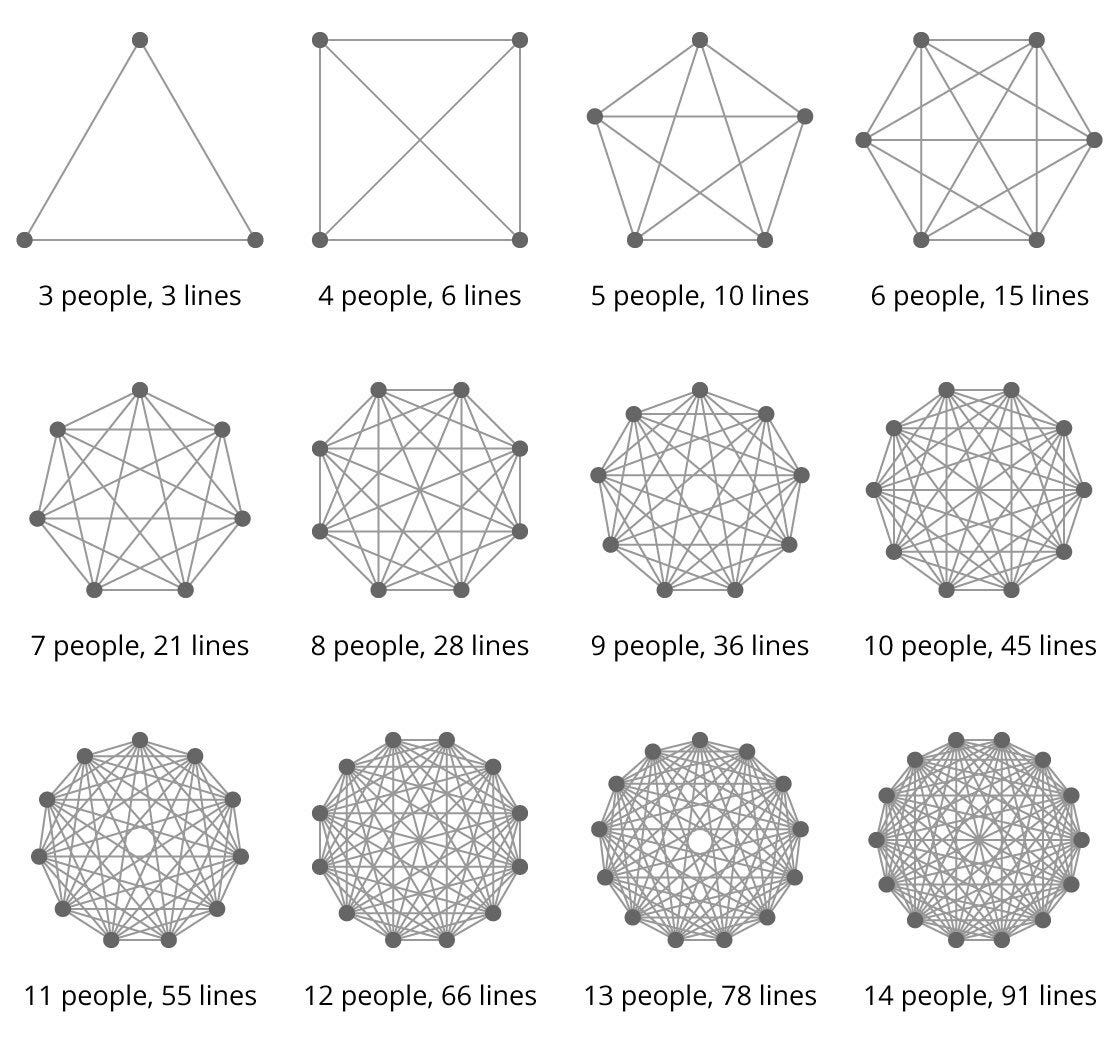New rule: No more DM-ing
New rule: No more DM-ing (at work, at least).
At first glance, direct messaging (DMs) may seem like an efficient way to communicate at work. After all, it's just like texting but without the hassle of remembering someone's phone number.
When people communicate via DMs, they lose the opportunity to share a question with a broader audience (and the hope of getting a quick answer if the person they message is busy).
Now, what happens when you have to ask the same question to someone else, and they need to ask someone else for information?
This is where things can get a little complicated.
This image from StackOverflow gives a simple visual for how communicating directly with a peer can quickly become a complex problem when it comes to asking questions and sharing knowledge.

With a team of just 14 people, we get 91 communication lines.
If you have ever played the game "Chinese whispers" or "Telephone," you will know that our messages with just a handful of people can become utterly divergent from our original conversation.
The solution to this is using open communication streams.
The Benefits of Open Communication Streams
Open communication streams have several benefits over direct messaging.
DMs are disruptive because they break the flow of work. When you're in the middle of a task, and you get a DM, it's natural to want to stop what you're doing to respond.
With an open communication stream, everyone can see the conversation, so you're less likely to be interrupted, and if you are deep in work it is likely someone else could help.
It also breaks the flow for the person who sent the DM because they now have to wait for a response.
And if that response isn't forthcoming, it can lead to frustration and even resentment.
Second, open communication streams promote transparency. When everyone can see the conversation, there's more room for communication and understanding.
Finally, open communication streams encourage collaboration. Seeing how others contribute to the conversation, you can jump in and offer your help easily.
The main reason I dislike DMs is mostly because of the silos of knowledge they can create.
How to Create Open and Effective Communication Streams
By having an open conversation on team channels on Slack, Discord, GitHub, or Microsoft Teams, you now start creating a knowledge base that you can share with people who encounter similar problems or ask how you got to a conclusion.
These tools allow you to create different channels for different topics, so you can easily find the information you need without being bombarded with notifications.
Direct messaging may seem like an efficient way to communicate at work, but there are several reasons why it's not the best option.
Direct messaging is not transparent and is inefficient as it can lead to bottlenecks.
We all know bottlenecks are bad so let's get rid of this one easily.
